Paradox, Sunrise, and a Thirsty Place
By Nina Elder
An artist ponders climate crisis and solastalgia through multiple landscapes.
An artist ponders climate crisis and solastalgia through multiple landscapes.

This essay traces the complexities of living and making art in an era of climate disruption, using the format of the scientific article as a frame for exploring these concepts. The text reflects the author’s research in the U.S. Southwest, a recent residency at the Montello Foundation in northern Nevada, and her ongoing engagement with the changing landscape of Alaska.
I wander off and leave my glass filled with filtered rainwater on the porch. Days later, I return to find that I am sharing this glass of water. Incremental lines of dried minerals mark the sides, a measure of each sip taken by this thirsty place. One fence crosses my view, no windshields mirror the Sun, no dust is stirred by foot or hoof or rubber tread. My roof is the one rectangle interrupting this rumpled and ravined land. The big Nevada sky meets the ground in a blustering horizon line. Moving air whistles through endless sagebrush leaves, causing billions of small percussions, a never-ending ovation of silver green. The dogs wake from their dusty dreaming, huff and keen at the sky, warning of a wind that will bend the grasses, take a gulp from my glass, and move on. This is not a place of eddying winds or lingering dust devils. This is a place of linear winds. I am the only thing without roots that lingers here.
Go outside. Do it. Now. Trust me. Get in the elevator and go to ground level, get off your couch and go into the yard, wheel your wheelchair out the door. However you do it, go outside. Now turn to the east. Imagine where the Sun will rise tomorrow. Make a circle with your fingers and thumb and place it on the horizon. Imagine the Sun rising into the small tunnel you have made. For now, you can look, or imagine looking, into the spot that would blind you at sunrise. You are looking into tomorrow. You are saluting the future. You are creating a gesture of hope. Thank you for joining me in this choreography.
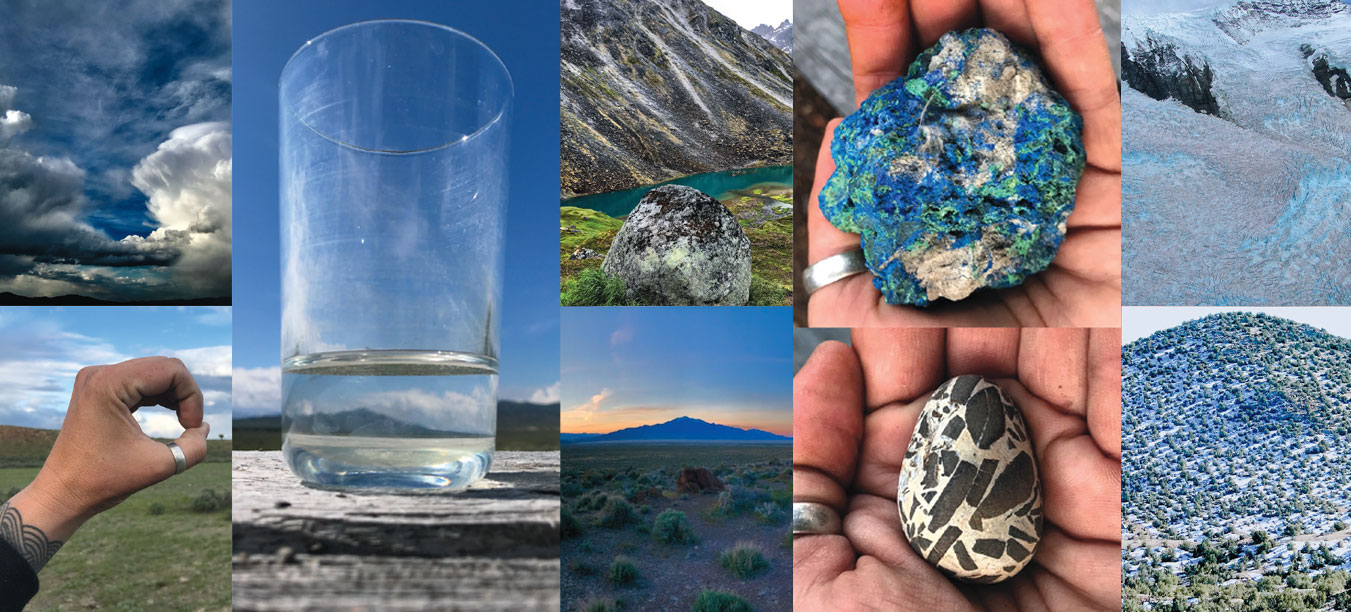
From left to right: clouds, Elko County, Nevada (top)); author’s hand at sunrise, Montello Foundation, Elko County, Nevada (bottom); water glass, Montello Foundation, Elko County, Nevada; an erratic, Bomber Pass, Alaska (top); sunrise, Tetzlaff Peak, Utah (bottom); rocks collected by Cynthia Hendel, held by the author, Wrangell–Saint Elias Wilderness, Alaska; Stairway Icefall, Root Glacier, Alaska (top); a sage-covered hillside, Ortiz Mountains, New Mexico (bottom). Photographs by the author.
IF THE SUN DID NOT RISE tomorrow, would you reach out in the darkness to the person closest to you? Would the acrid sweet smell of sage not wake me? Would the dawn-heralding song of the hermit thrush be stuck in her throat like a ball of grief? If scientific truth were disrupted, we would have our relationships and we would have beauty. The absence of birdsong is terribly haunting.
You believe that the Sun will rise tomorrow. It will warm the plants, bring light to your eyes, pull songs from the throats of birds. You have acknowledged the place where you are. You have affirmed that light will shine on you and that a shadow will stretch behind you. Looking through the circle of your thumb and fingers, you have marked your own perspective. You have created a singular, unprecedented vision. You have imagined your tomorrow.
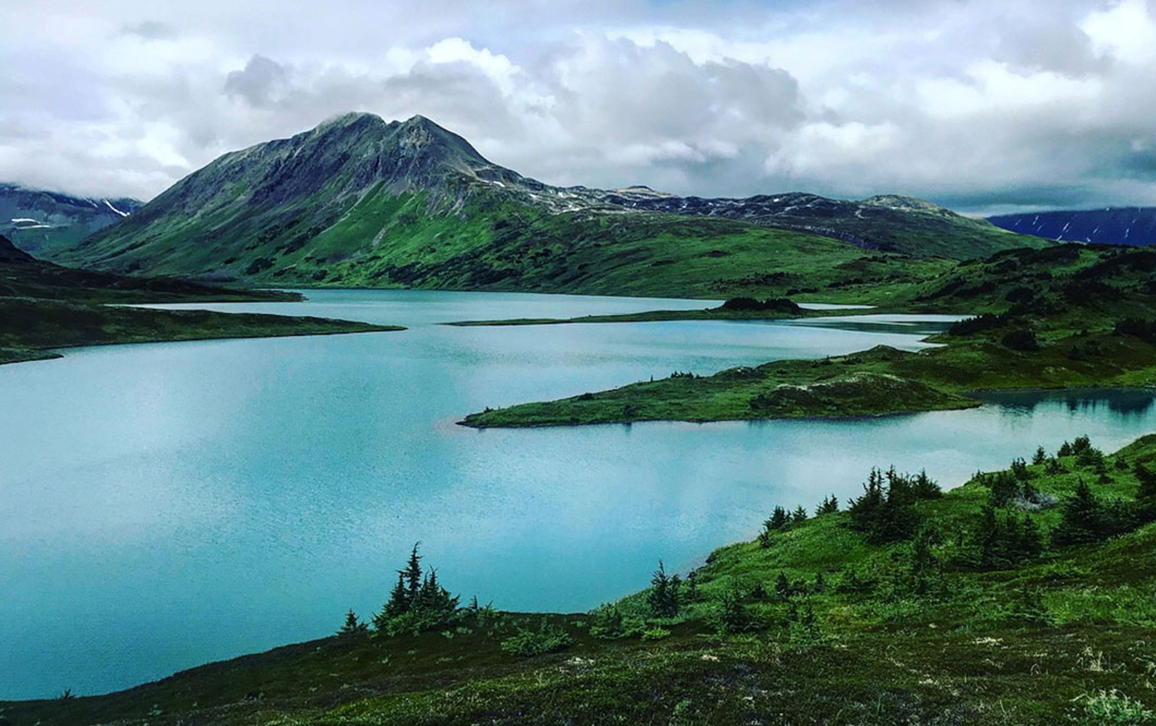
The coastline of Lost Lake, in Chugach National Forest near Seward, Alaska, shows the intricate curves and turns of a landscape formed by glaciers. Elder’s photography book Erratic (2018) collects her notes and letters, as well as her photos and drawings of glacial landscapes and erratics, rocks carried from one place to another by glaciers. Photograph by the author.
SOLASTALGIA IS A PREMONITION of longing for the present moment from an anticipated future. It is cherishing the places we live as we know them now, and at the same time feeling anxiety about what is happening to those places and what is to come. Environmental philosopher Glenn Albrecht, who coined the term, describes it in a 2005 paper in Philosophy Activism Nature as “an intense desire for the place where one is a resident to be maintained in a state that continues to give comfort or solace.” It is homesickness before leaving home. “You can’t step in the same river twice” says something about time. What might be more accurate is to remind ourselves that the banks of the river are eroding, the sunlight is moving across our faces, and our perspectives are shifting. Solastalgia is often described as the psychological condition of climate change. It is a complex sensation, akin to a child watching a parent develop Alzheimer’s, the bittersweetness of young love and inevitable loss, or seeing the bright yellowing of autumn leaves before the darkness of winter. In this early moment of the Anthropocene, a time increasingly defined by precariousness and unthinkable futures, solastalgia is palpable.
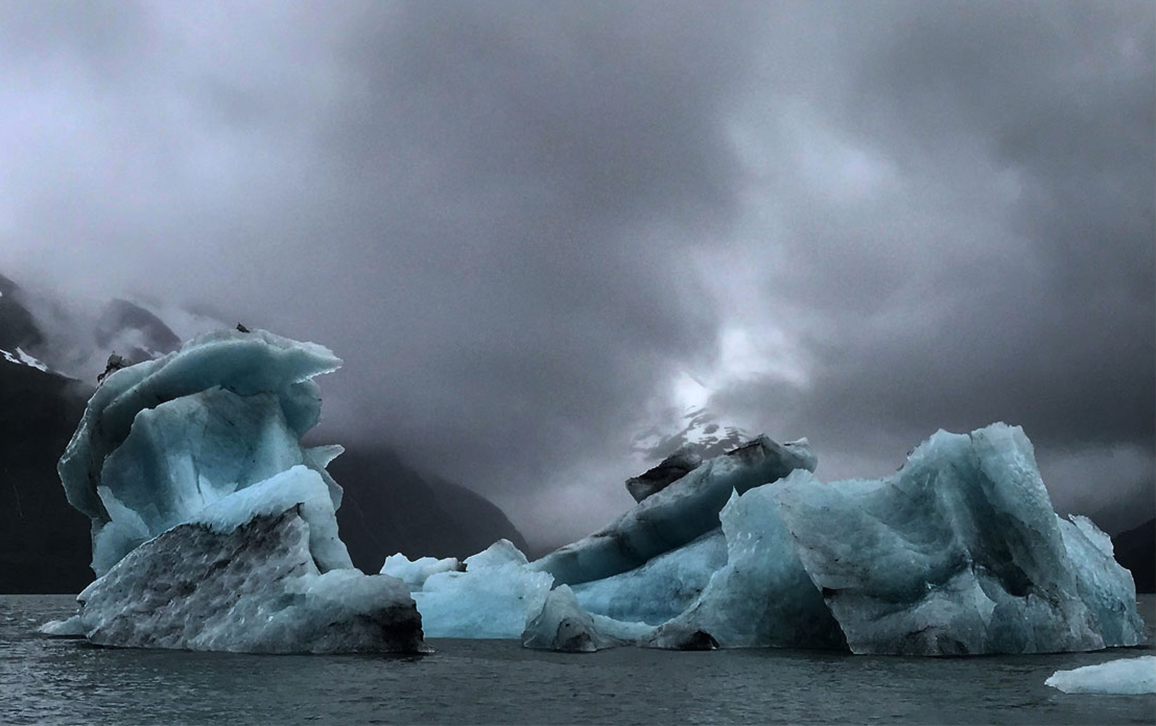
Icebergs float in Portage Lake on the Kenai Peninsula, Alaska, 2018. Photograph by the author.
I ALWAYS THOUGHT THAT the past was the earthen part of the coastline, and that the future was the ocean. The past seemed immutable, solid, giving form to the future. The future seemed wild, unpredictable, capable of sea changes and mighty storms.
Now I think the past is the wild thing, the untamable ocean. The carbon that humans have released into the atmosphere, the plague of plastics we have unleashed, the cultural destruction of colonialism, the disruptions we have caused to all ecological systems—this anthropogenic storm will continue eroding the future, violently buffeting every moment that will come.
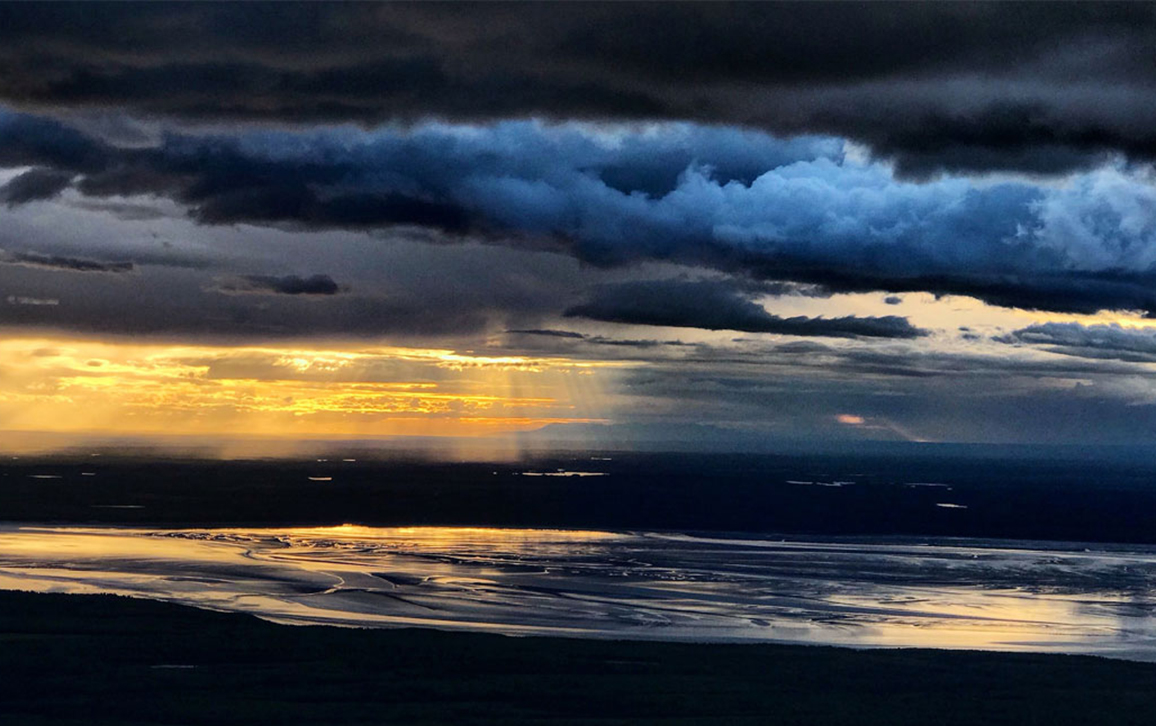
The Sun rises over the Knik Arm on the summer solstice, Anchorage, Alaska, 2018. Elder’s project in progress, the Solastalgic Archive, holds materials that contextualize and give breadth to how we are living and making in this time of accelerated change. She asks people to contribute an object to the archive in response to the questions, “What helps you feel the present? What connects you with your ancestors? How are you creating the future? Where is your time? When are you?” Materials in the collection thus far include poems, photographs, zines, seeds, rocks, mixtapes, manifestoes, coffee cups, recipes, and diagrams. Photograph by the author.
A GLACIER, BY DEFINITION, is always moving and falling. There is no angle of repose.
errare (Latin) – v.i. 1. to wander, to roam, to ramble; 2. to err, to be wrong, to be mistaken
An erratic is a rock that has been transported by a glacier and is expelled once the glacier melts. It signifies the time and place where the glacier originated— often kilometers and thousands of years distant. Erratics are pieces of the parent bedrock that tell of the path the glacier traveled and the process of deposition. They are time travelers, treasure troves, reliquaries, rubble.
What are we creating that will get swept forward, borne along in the destructive path of time, to wash ashore in the future? What truths of our time will tumble along, resilient and intact, into another era? What are the unintended results of our actions? It will be those outliers, the monsters and mysteries and miracles, that define us, much more than the smoothly polished contributions we intend to withstand the test of time.
As an artist, I ponder what I am carrying within myself and what evidence my life will leave. I explore geologic and social displacements and the voids they cause. What remains when the relics of these displacements are carried away? What am I responsible for carrying? I explore the echoing hollow that is left when we don’t allow for paradox or for complexity.
We are all creating archives of solastalgia. As artists, cryospherologists, poets, welders, dancers, mothers, students, astrophysicists, farmers, and architects, we are trying to pause time. We create reliquaries, map coastlines, fill time capsules, and document now. In the passage of time, we endeavor to hold the fleeting present in a place where it can be read, smelled, touched, caressed, cared for, explored, understood, and validated. We are awash in histories, futures, loss, change, and impermanence, yet we are now.
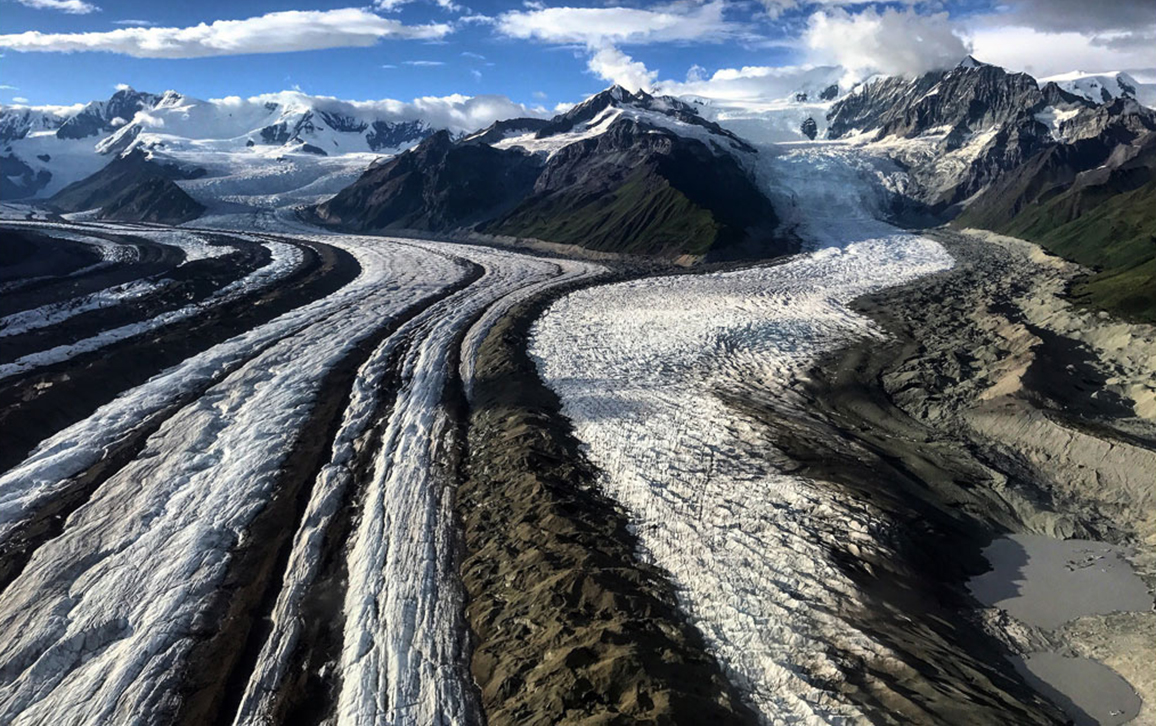
Glaciers have left their mark on the landscape near McCarthy, Alaska, 2017. Photograph by the author.
What cannot be archived? What allows us to look into blindingly bright beauty, to feel ourselves on the changing coastline, to revere the complexity of now?
The smell of sagebrush in the morning
The song of a hermit thrush
A thirsty wind
A sunrise
Hope
Hear the author read her essay in this slideshow.
Click "American Scientist" to access home page
American Scientist Comments and Discussion
To discuss our articles or comment on them, please share them and tag American Scientist on social media platforms. Here are links to our profiles on Twitter, Facebook, and LinkedIn.
If we re-share your post, we will moderate comments/discussion following our comments policy.